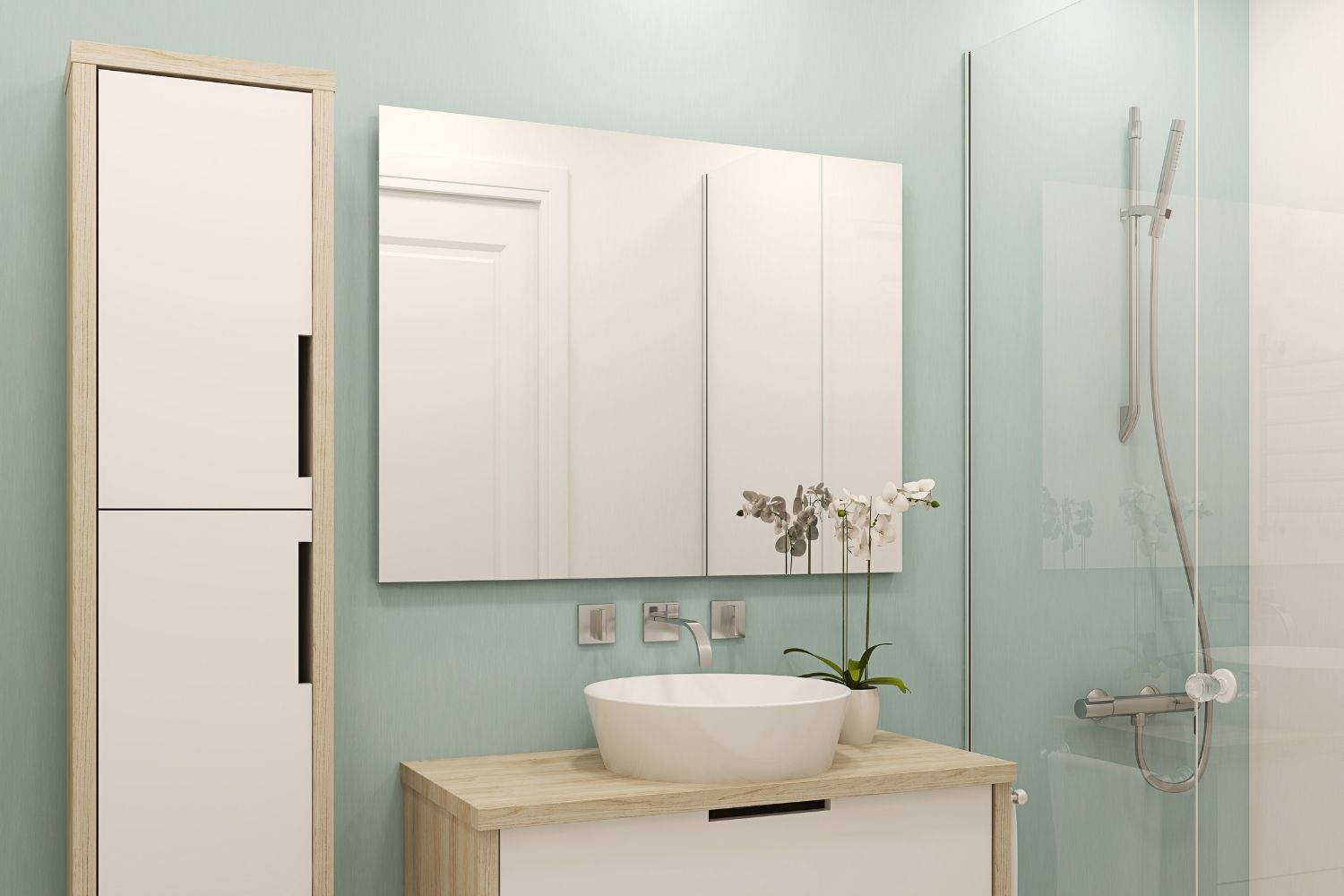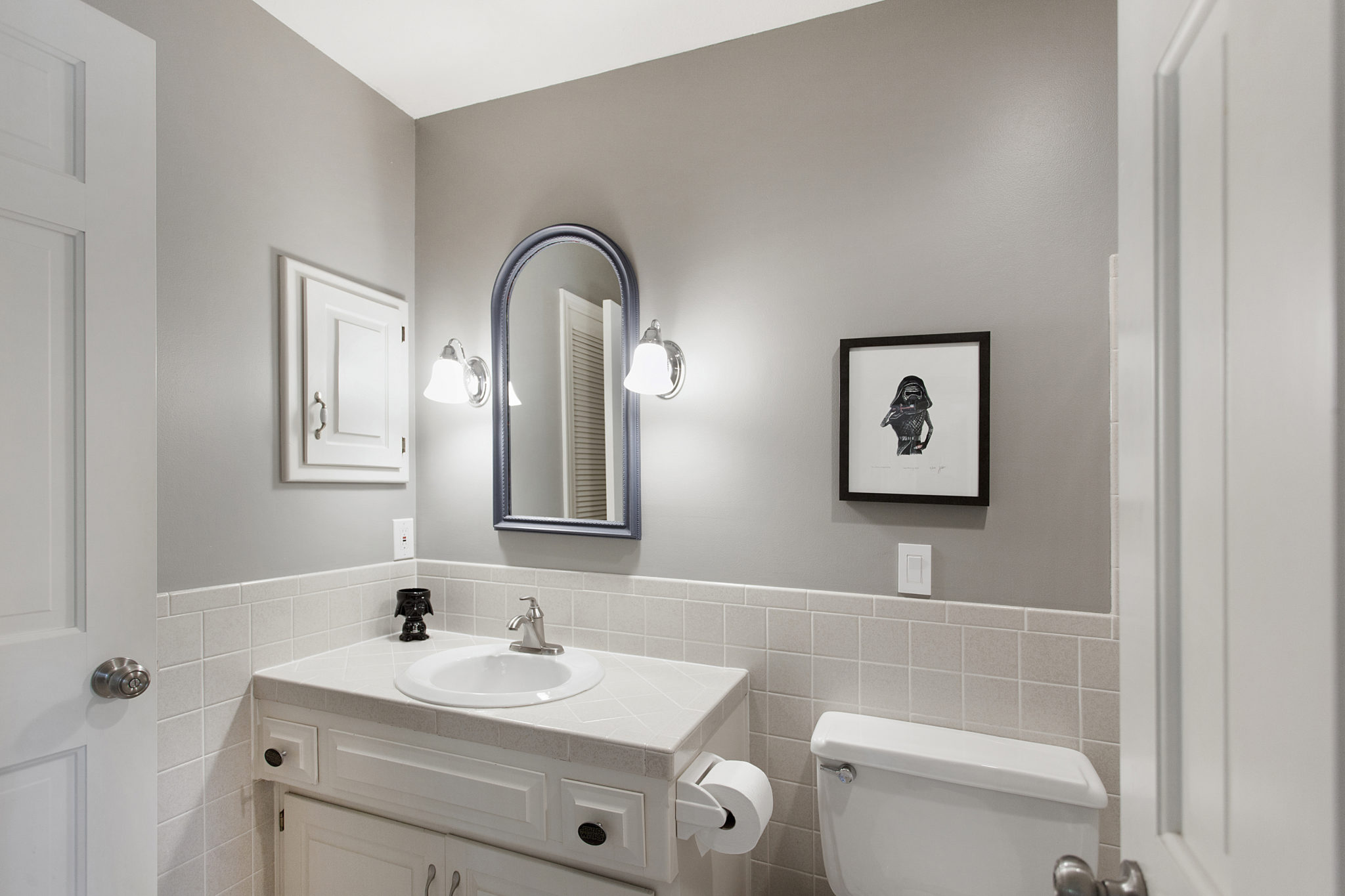Design Challenges of Small Windowless Bathrooms: Small No Window Bathroom

Small windowless bathrooms present unique design challenges that require careful planning and creative solutions. The lack of natural light and ventilation can make these spaces feel cramped and uninviting, while the absence of a window can contribute to a sense of claustrophobia. However, with thoughtful design strategies, it’s possible to transform these spaces into functional and aesthetically pleasing havens.
Maximizing Space in Small Windowless Bathrooms
The limited square footage of a small windowless bathroom necessitates maximizing every inch of available space. This can be achieved through strategic furniture selection, clever storage solutions, and a focus on vertical space.
- Choose Compact Fixtures: Opting for space-saving fixtures like pedestal sinks, corner showers, and wall-mounted toilets can significantly increase usable floor area.
- Utilize Wall Space: Installing floating shelves, mirrored cabinets, and wall-mounted organizers maximizes vertical space while keeping the floor clutter-free.
- Employ Multifunctional Furniture: A small vanity with built-in storage or a ladder shelf can serve as both a storage solution and a decorative element.
Creating an Illusion of Spaciousness
While a small windowless bathroom can never truly replicate the feeling of a large, airy space, clever design tricks can create an illusion of spaciousness.
- Light and Color: Light colors like white, cream, and pale pastels can visually enlarge the space, while strategically placed mirrors can reflect light and create a sense of depth.
- Minimalist Design: A minimalist approach with clean lines and simple fixtures can make the bathroom feel less cluttered and more open.
- Open Shower Design: If possible, consider a walk-in shower without a door or a glass enclosure to minimize visual barriers and create a more open feel.
Creating a Sense of Light and Airiness
:max_bytes(150000):strip_icc()/GettyImages-1336941059-afed871ddf22476e8e444b7b59810b4d.jpg)
Transforming a small windowless bathroom into a bright and airy space requires clever design strategies. The absence of natural light presents a unique challenge, but with careful planning and execution, you can create an illusion of spaciousness and luminosity.
Using Light-Colored Paint, Reflective Surfaces, and Strategic Lighting, Small no window bathroom
Light-colored paint reflects light, making a room appear larger and brighter. Opt for white, off-white, or light shades of gray or beige. Reflective surfaces like mirrors, chrome fixtures, and glossy tiles further amplify light, creating a sense of depth and openness. Strategic lighting plays a crucial role in enhancing the overall brightness.
- Install multiple light sources, such as overhead fixtures, sconces, and under-cabinet lighting, to create a layered effect.
- Choose light bulbs with a high CRI (Color Rendering Index) to ensure accurate color representation and enhance the perception of natural light.
- Consider using LED strip lights to create a soft, ambient glow, especially around the perimeter of the room.
Creating a Sense of Openness with Minimal Furniture and Maximizing Vertical Space
Minimalism is key in a small windowless bathroom. Limit furniture to essential pieces like a small vanity, a floating shelf, and a slim storage cabinet. Maximize vertical space by utilizing tall cabinets, shelves, and wall-mounted organizers. Avoid bulky furniture that can make the space feel cramped.
Incorporating Decorative Elements Like Mirrors and Artwork to Add Visual Interest
Mirrors are essential for amplifying light and creating an illusion of space. Large mirrors placed strategically can make a small bathroom feel more expansive. Artwork, particularly abstract or nature-inspired pieces, can add visual interest and create a focal point. Choose artwork in light colors and with a minimalist aesthetic to avoid overwhelming the space.
Effective Ventilation Solutions

Proper ventilation is crucial in any bathroom, but it becomes even more critical in windowless bathrooms. Without a window to naturally circulate air, moisture and odors can easily build up, leading to unpleasant conditions and potential health hazards.
Windowless bathrooms require strategic ventilation solutions to maintain a healthy and comfortable environment. These solutions not only prevent the buildup of moisture and odors but also help control humidity levels, reducing the risk of mold and mildew growth.
Exhaust Fans
Exhaust fans are the most common and effective ventilation solution for windowless bathrooms. They work by drawing out moist air and odors from the bathroom and expelling them outside.
- Types of Exhaust Fans: Exhaust fans come in various sizes and styles, including inline fans, centrifugal fans, and bathroom vent fans. Inline fans are typically quieter and more energy-efficient, while centrifugal fans are better suited for larger bathrooms. Bathroom vent fans are often integrated into the ceiling or wall.
- Choosing the Right Size: The size of the exhaust fan is crucial for effective ventilation. A rule of thumb is to choose a fan with a cubic feet per minute (CFM) rating that is equal to or greater than the bathroom’s cubic footage. For example, a 100-square-foot bathroom with an 8-foot ceiling would require a fan with a CFM rating of at least 800 (100 x 8 = 800).
- Installation: Exhaust fans should be installed according to manufacturer instructions and local building codes. Ensure the fan is properly connected to a duct that leads to the exterior of the building. The duct should be sealed to prevent air leaks and ensure efficient ventilation.
Dehumidifiers
Dehumidifiers can be a valuable addition to ventilation systems in windowless bathrooms, particularly in areas with high humidity. They work by removing excess moisture from the air, helping to prevent mold and mildew growth and improve air quality.
- Types of Dehumidifiers: Dehumidifiers come in various sizes and types, including desiccant dehumidifiers and compressor dehumidifiers. Desiccant dehumidifiers are more effective in cold environments, while compressor dehumidifiers are better suited for warmer climates.
- Choosing the Right Size: The size of the dehumidifier should be appropriate for the bathroom’s size and humidity levels. A dehumidifier’s capacity is measured in pints per day (PPD). A general rule of thumb is to choose a dehumidifier with a PPD rating that is equal to or greater than the bathroom’s square footage. For example, a 100-square-foot bathroom might require a dehumidifier with a PPD rating of 30 or more.
- Placement: Place the dehumidifier in a central location in the bathroom to maximize its effectiveness. Ensure the dehumidifier is placed on a level surface and away from any heat sources or drafts.
Ventilation Systems
For larger bathrooms or those with high humidity levels, a dedicated ventilation system may be necessary. These systems are typically more complex than exhaust fans and dehumidifiers but offer greater control over ventilation and air quality.
- Types of Ventilation Systems: Ventilation systems can be mechanical or natural. Mechanical systems use fans and ducts to circulate air, while natural systems rely on air pressure differences to move air. Some ventilation systems include features like heat recovery or air filtration.
- Choosing the Right System: The choice of ventilation system depends on the bathroom’s size, humidity levels, and budget. It is recommended to consult with a qualified HVAC professional to determine the best system for your needs.
- Installation: Ventilation systems should be installed by a qualified HVAC professional to ensure proper operation and safety. The system should be properly sized and connected to the bathroom’s ductwork.
